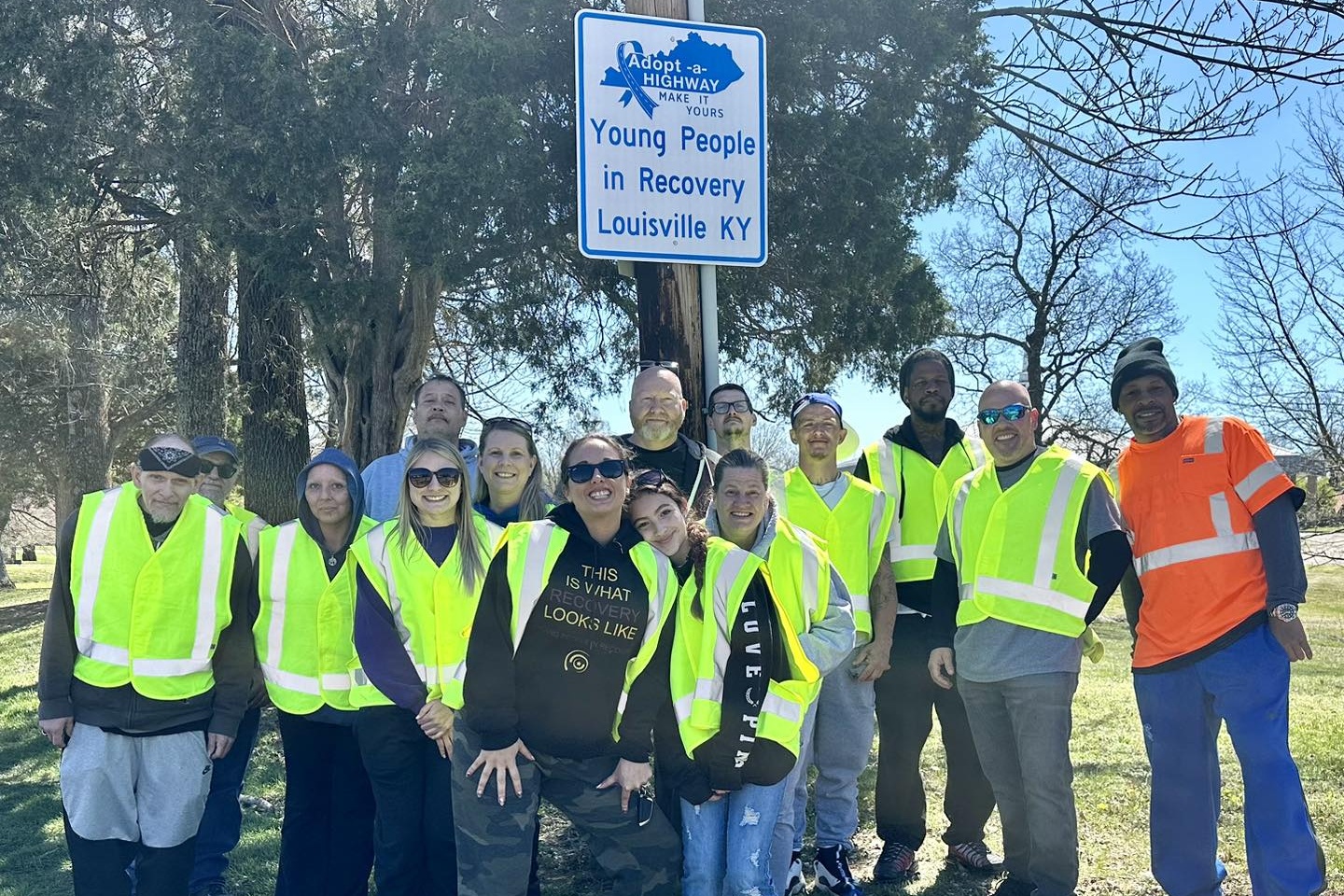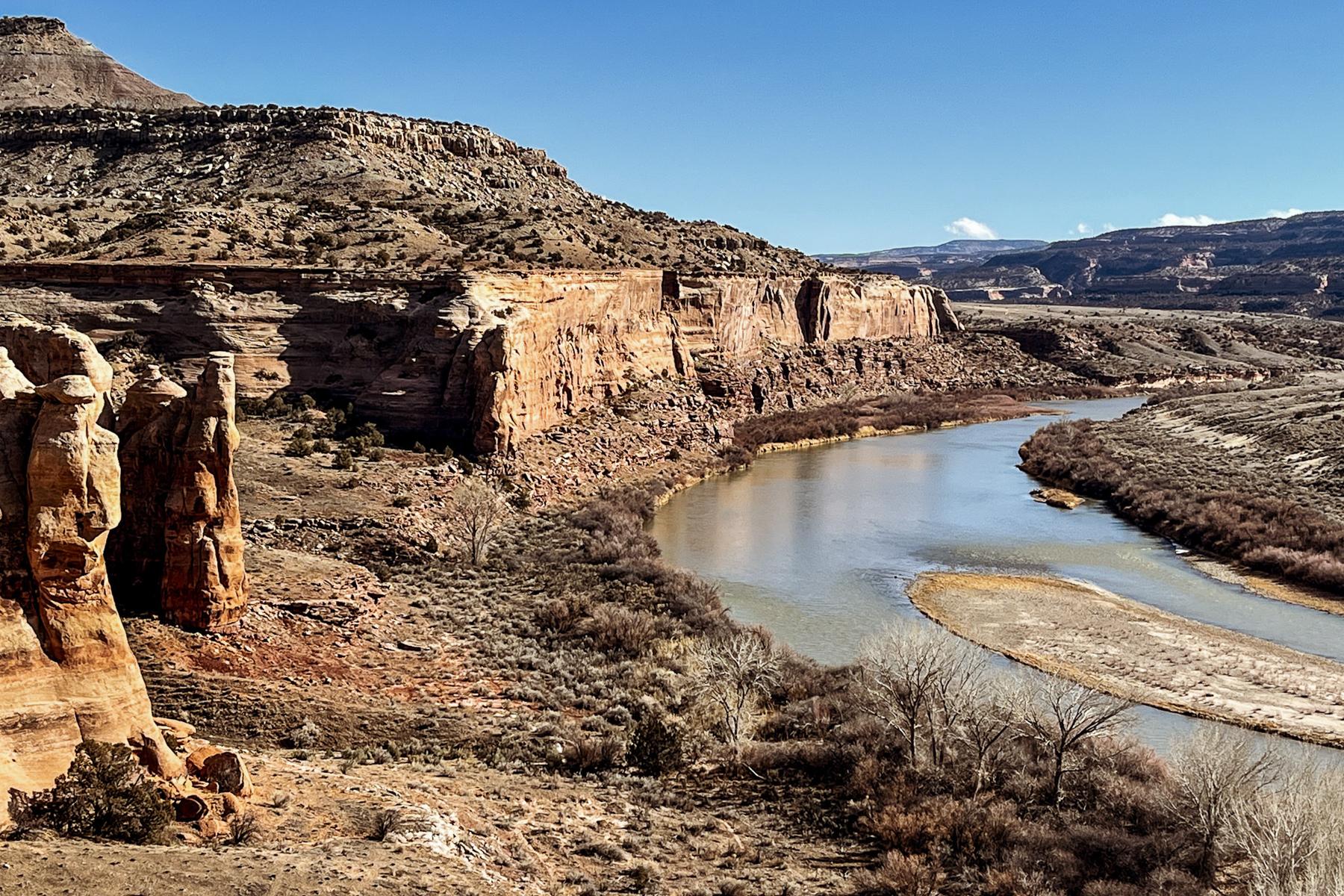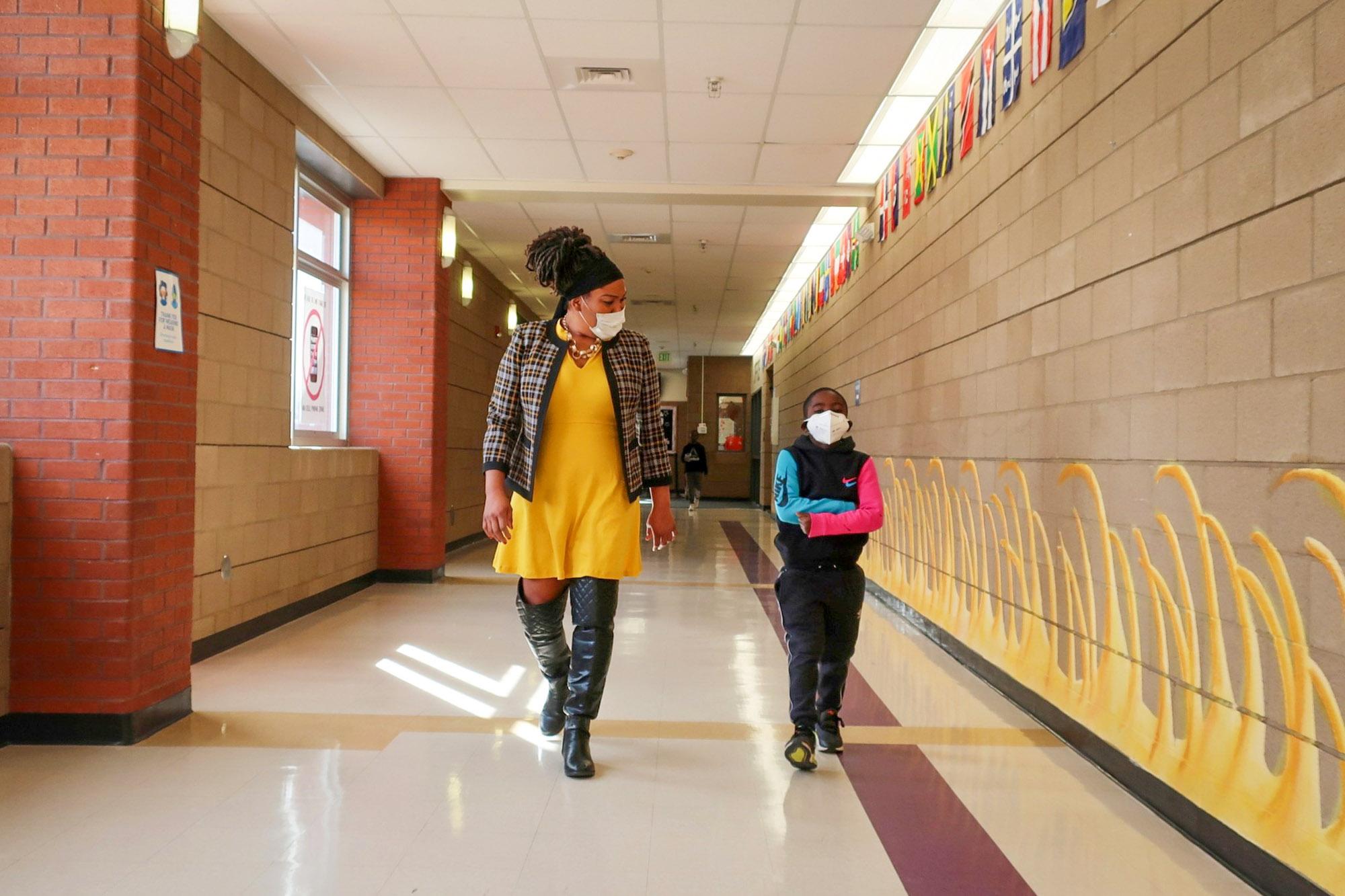
Teacher Emily Dirks looked out onto a sea of young faces attached to squiggly, squirming mostly 5-year-old bodies.
“Ran-Dan,” she said. “Does that rhyme? Thumbs up or down?”
“No!” said the group of children in the front of her kindergarten classroom at Florida Pitt Waller K-8, a Denver Public Schools school in northeast Denver. A few say yes.
“So, echo me, say, ‘ran’” Dirks continued.
“…Ran!” shouted the children.
“Dan,” said Dirks with emphasis.
“Dan!” shouted the children back.
They clap out sounds. They punch the air on certain sounds. They brainstorm other rhyming words.
Dirks, who has taught here for 15 years, reminded her kindergarten class that rhyming words all have the same ending sound. She’ll repeat that point many more times.
Kindergarten — and the year prior, preschool for 4-year-olds — is a time to focus on these crucial pre-reading skills. They are also a time to learn those all-important life skills: sharing, resolving conflicts, cleaning up after yourself, and how to care for others.
So, what happens when you miss kindergarten or preschool because of a pandemic? A lot of work.
The school has a new literacy program that has meant more teacher training and a new social and emotional program.
“It’s hard to fit it all in,” Dirks said. “You have to find the time to sit and look, ‘What am I going to take away and what to put in?’”
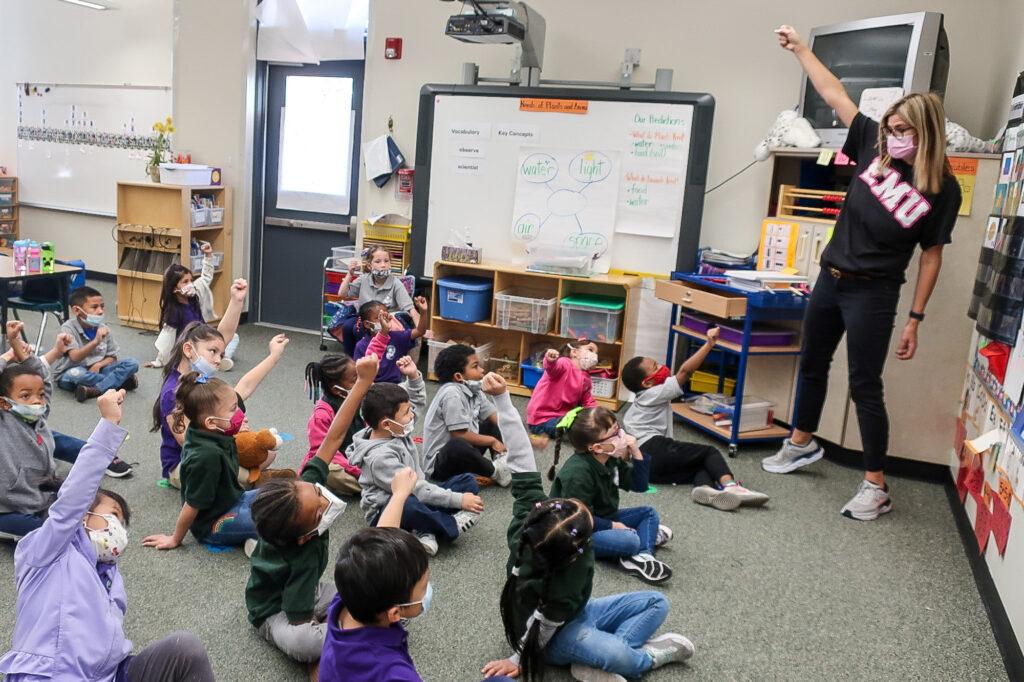
When students returned to classrooms this year, early grade teachers noticed students had forgotten how to learn.
Dirks had to spend a lot of time on two-step directions such as “Stand up. Thumbs Up.” The children couldn’t process any more than that.
Many of the kids in this classroom and their fellow first graders hadn’t been in a formal classroom with other students in 18 months. Instead, they’d been on screens, often alone. So, they struggled with listening, processing what the teacher was saying, and then doing the task.
Fine motor skills, which allow students to hold a pencil or a pair of scissors, were shaky. Students who opted for fully remote the entire year were further behind, teachers say.
So, in kindergarten now, more time than typical has been spent on learning classroom routines and how to regulate emotions. That has meant less time for academics.
“Everything has shifted,” Dirks said. “I kept telling my administration, ‘kindergarten, first (grade) are really going to have an impact, as well as second. Not knowing what it’s like to sit in a room with 25 other students and share materials, listen to a teacher, stop what you’re doing, focus on the instruction.”
And she was right.
At the beginning of the year, about half of kindergartners scored significantly below grade level on district reading tests. But teachers and school administrators say students are making gains much more quickly this year.
On the most recent monthly reading tests, the number of students significantly below grade level had been whittled to a third of kindergartners. In first grade, the results are even more dramatic. Half were in that low level when school started, now it’s only a quarter. District-wide results were not immediately available.
Principal Kayla Grayson-Yizar believes there is another reason for the dramatic turnaround. The first two weeks of school, staff took copious notes on exactly what literacy and math skills each student had.
“We have spreadsheets like no other. What letters do they know? What sounds do they know? What about short vowels? What about long vowels? Are they ready for building words? What type of capitalization?”
The kids were grouped by specific skill, and they got to work.
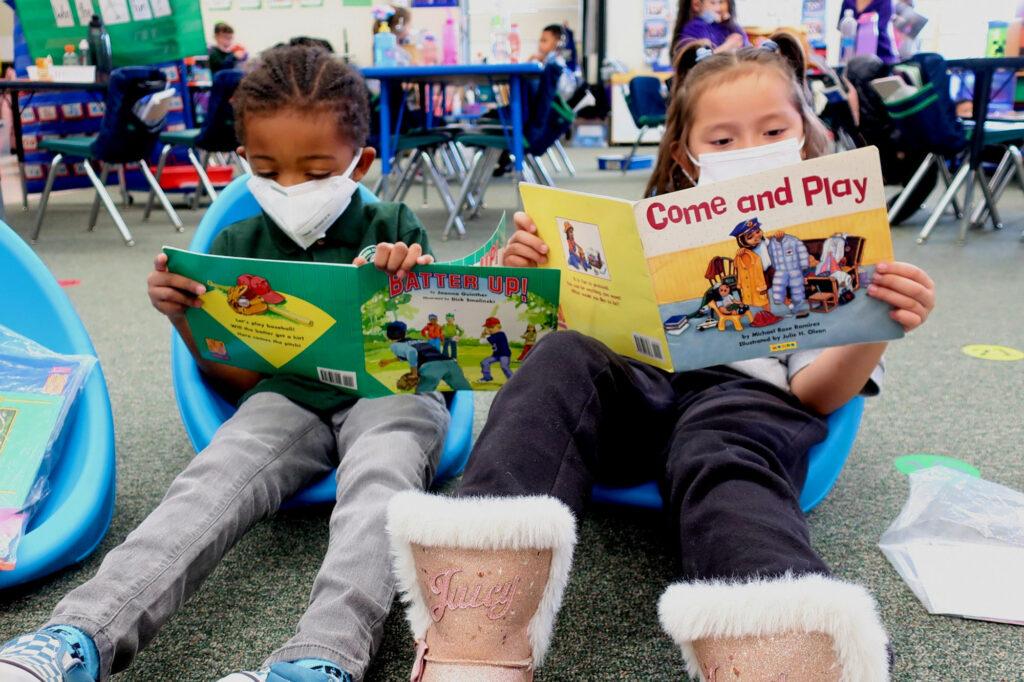
First-grade teacher Debbie Robinson said a new district supplemental reading curriculum this year was the missing link.
The Heggerty Curriculum focuses on phonemic awareness, which are the sounds in spoken words, not just phonics — the relationship between sounds and written symbols.
“I think it’s going to have a huge bang for the buck with all the kiddos,” she said. “Pandemic or no pandemic …. It's the science of reading and the classes that all the teachers have to take and the understanding of how to teach reading that’s going to make a big impact.”
The emphasis on literacy this year is intense. In her first-grade class, it starts with a 2.5-hour literacy block in the morning, and Robinson teaches an additional 30 minutes of literacy at the end of the day.
The school has also hired an additional first-grade teacher which has made it easier for teachers to meet individually with more students during the week. In addition, two interventionists — with specialized training in reading — pull students for extra help.
It’s been hard work. First-grade teacher Robinson said that at the beginning of the school year, students couldn’t sit through five minutes of a story.
Things have improved a lot since then.
“Children are so resilient, and they’ve acclimated,” said Robinson, who is in her 29th year of teaching.
It’s common to see a wide range of skills in first grade. Some students in her classroom are reading fairly easily, zipping through books about animals with tails. But others are still struggling.
It will take time. Robinson’s goals for students who are significantly behind in reading is two years of growth in one year. She’s finding that having students who were in kindergarten remotely last year is “comparable to when some students used to go to half-day kindergarten instead of full-day and most catch up quickly in first grade.”
“I just want them to love learning, to love reading … I don’t think they’ve picked up books for 2 years, a lot of them.”
For the kids who came into first grade knowing the mechanics of how to read, they’ve “skyrocketed.” They just needed exposure to books, Robinson said. Now, most in her class are ready to work on first-grade material.
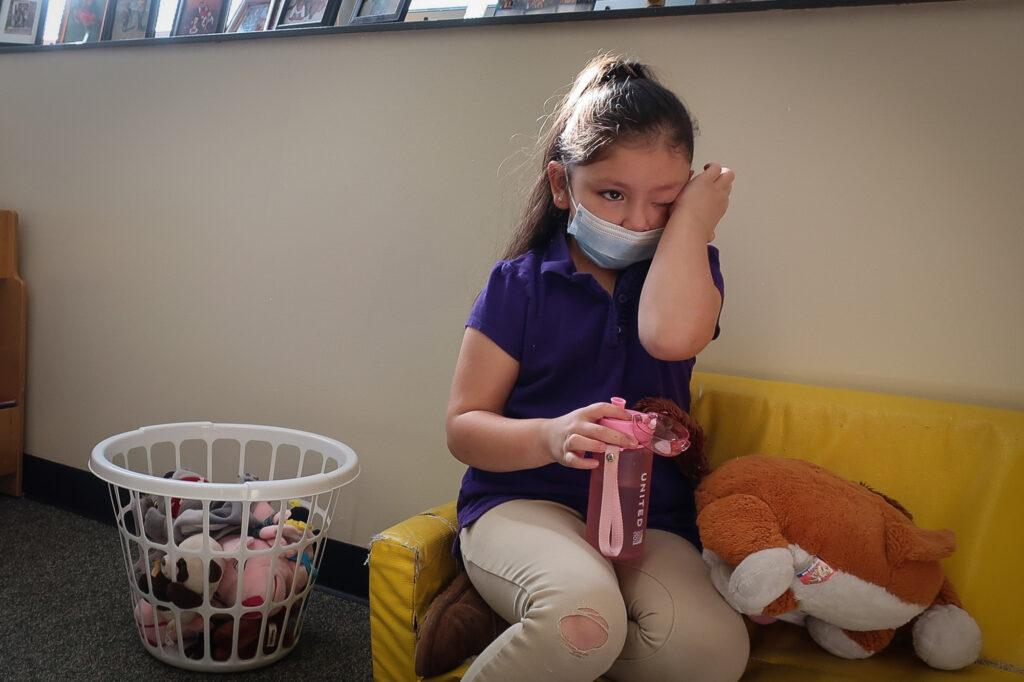
Back in the kindergarten class, a girl clutches a stuffed dog and cries.
Being at home without other kids for 18 months, many children missed out on other crucial skills like sharing, resolving conflicts or knowing how to process emotions.
“Elijah take the puppy,” said a girl, who has been clutching a stuffed brown dog all morning.
Kindergarten teacher Emily Dirks said the pandemic has stressed young children in many ways. They might be upset about losing a toy or someone bumping into them, but that’s not necessarily what’s making them upset. Instead, “It’s the trigger that finally lets them release that emotion, that fear and anxiety they’ve been having.”
During the pandemic, family members have lost jobs, homes, even lives. There was racial trauma, COVID, and a lot of anger in the community. In the case of the girl who is crying, it’s a new baby at home.
“One more deep breath in and then out,” paraprofessional Claire Pewitt said, crouching down at eye-level to help the young girl calm down.
Another strategy is sending children who are having a dispute to the “cozy spot,” a little classroom library where kids take a moment to calm down or sit with the other children for a minute.
“You need something to feel better?” a little boy asks his pony-tailed friend. After a small tiff they sit together in the cozy spot. She nods and he gives her a hug. Others ask for a high five or ‘knuckles’ or a picture. Throughout the morning, the kids nurture one another a lot. Creating a safe, loving environment where the students care for one another has been a major goal of Dirks.
That is a schoolwide goal embodied by the school’s leader.
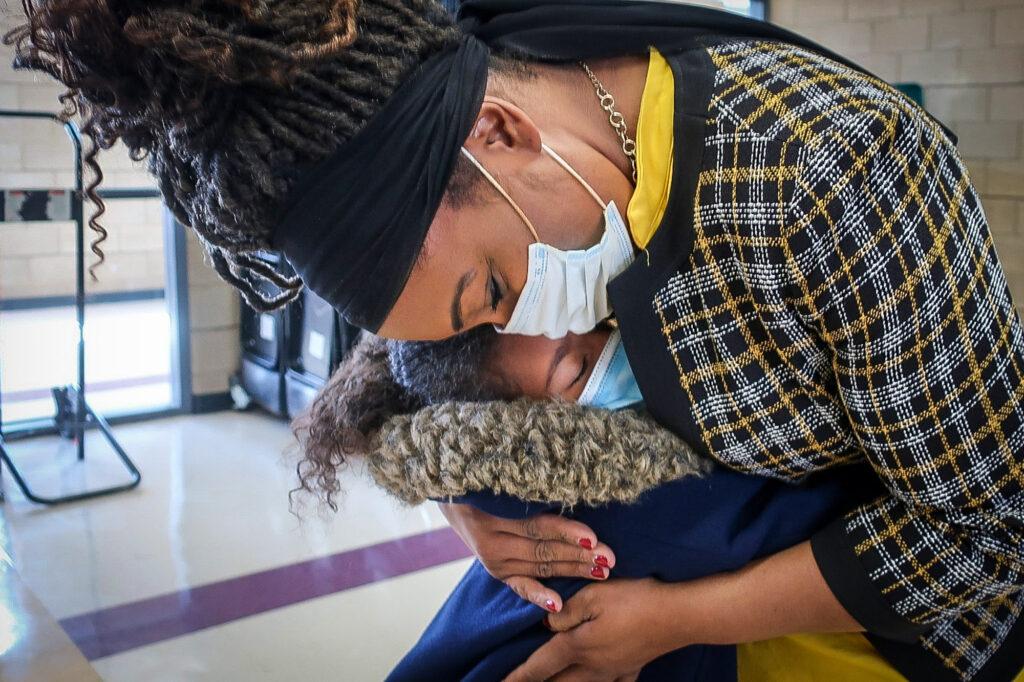
Principal Kayla Grayson-Yizar, wearing a bright yellow dress, is a ball of energy.
She starts her day bustling into the teachers’ meeting room, replenishing the refrigerator with new oat coffee cream that gets everyone pumped. She greets a dozen people and answers a dozen questions before helping an administrator prep for a support session for a first-year teacher, overwhelmed by the range of needs in her classroom.
The year so far has been a very heavy lift for teachers.
Kindergarten teacher Emily Dirks said her spark returned when children returned to in-person learning again. But for many teachers, including her, the year has been even more challenging than last year.
“I know a lot of teachers are having a hard time sleeping, a hard time waking,” she said. “It’s exhausting.”
Grayson-Yizar said administrators are trying to be thoughtful, methodical, and strategic in helping teachers to balance stress. She texts a few teachers at a time and brings them breakfasts, always keeping an eye out for which teachers need more support from a district trainer, or when to cut a monthly staff meeting short.
Creating a positive, uplifting mood in the school is key to moving the school forward.
She hugs, high-fives, and greets dozens of children as she walks the halls, remembering almost all of their names. Grayson-Yizar must hug 100 people a day.
Dean of Student Services Candace Walker says that focus on creating a community of love has helped get kids back on track.
“We’re a big family. We say ‘We love you so much.’ We tell parents, we love our kids. We get that from our principal, she says, ‘You know I love you!’” Walker laughed.
More team meetings to problem-solve around the kids who are struggling is another key strategy. So are parent meetings. There are many more this year because parents are comfortable with Zoom now.
Counselor Jessica Pistone, who provides services to almost 800 students, said she has worked at many schools. This is her first year at Florida Pitt Waller. She said the school works very much as a community, where everyone knows everybody and works well together. Uncles, aunts, cousins are all part of the school’s community. That’s helped.
“I think our students are doing much better from the beginning to where we are now,” she said. “I think we’re back in those routines, the expectations are there, our students are rising to the expectations that we have. We’re getting there. We’re getting back to normal.”



